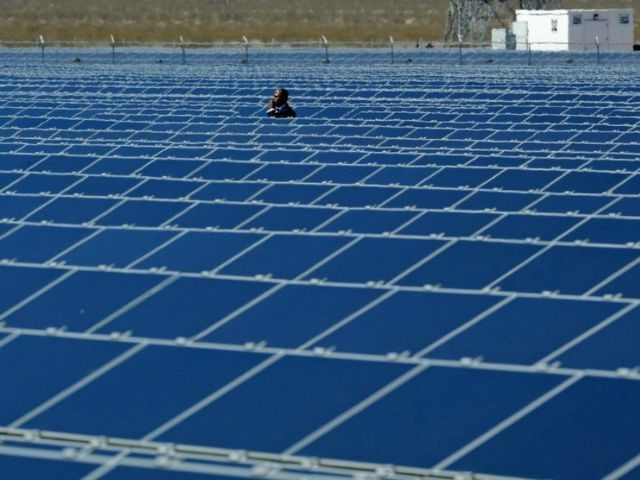San Jose-based SunPower Corp. will slash 25 percent of its total workforce as one of the prime beneficiaries of President Barack Obama blowing $200 billion of taxpayer cash to increase renewable energy by 1 percent of total energy consumption.
Blaming the average selling price for solar panels dipping by 25 percent during the third quarter of 2016, SunPower Corp (SPWR.O), the number two U.S. solar panel maker, has embarked on a new restructuring that calls for dumping California employees and closing a 700-megawatt solar cell fabrication facility in the Philippines. The company stated that its goal is to reduce 2017 annual operating costs to less than $350 million, according to a statement.
President Obama has been spending at least $39 billion a year on green energy projects, according to the Institute for Energy Research. But despite the huge subsidies, the current contribution of solar power to the electricity generation mix is expected to be just 0.6 percent.
One of the top four U.S. Energy Department subsidized solar deals was a $1.2 billion loan to SunPower to build a 250-megawatt solar plant in California’s Mojave Desert. With the solar bubble in full bloom, the French energy giant Total S.A. agreed to buy 60 percent of SunPower for $1.38 billion in December 2011.
But over the next three years, at least 36 of the Obama Administration’s taxpayer funded sustainable energy projects went bankrupt. After peaking at $40 a share in mid-2014, SunPower’s stock has fallen by over 80 percent to $7.97.
The Obama effort may not have been good for Americans, but the subsidies coupled with European Union subsidies have created a massive solar panel export industry for China. Despite limited domestic subsidies for buying and installing solar power systems, the U.S. Department of Energy stated that Chinese manufacturers have leveraged $30 billion of state support since 2010 to gain control of 70 percent of world solar panel production.
The Chinese Development Bank and other state-owned banks have provided domestic solar manufacturers with at least $41 billion in low-cost loans, while government initiatives have funded the development and production of equipment used to produce polysilicon, silicon ingots, wafers, cells and panels within the crystalline-silicon solar industry. Despite falling prices due to oversupply, China is also financing their domestic manufacturers’ pursuit of thin-film technology copper indium gallium diselenide for solar applications.
Despite the horrendous losses, the Obama administration convinced Congress to pass legislation in late 2015 that extended the federal 30 percent Investment Tax Credit for at least another three years, before ramping down incrementally to 10 percent after 2021. It is estimated that the taxpayer cost for the current ITC extension alone will be $40 billion.
California regulators shortly thereafter implemented a new proposal on net metering that would preserve the retail rate paid to rooftop solar systems. The new rules will provide about $8 billion in electric utility ratepayer subsidies to be paid to solar installations.
Photo: file

COMMENTS
Please let us know if you're having issues with commenting.